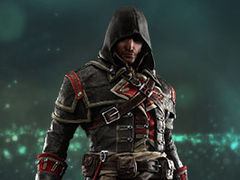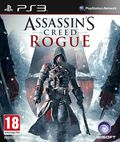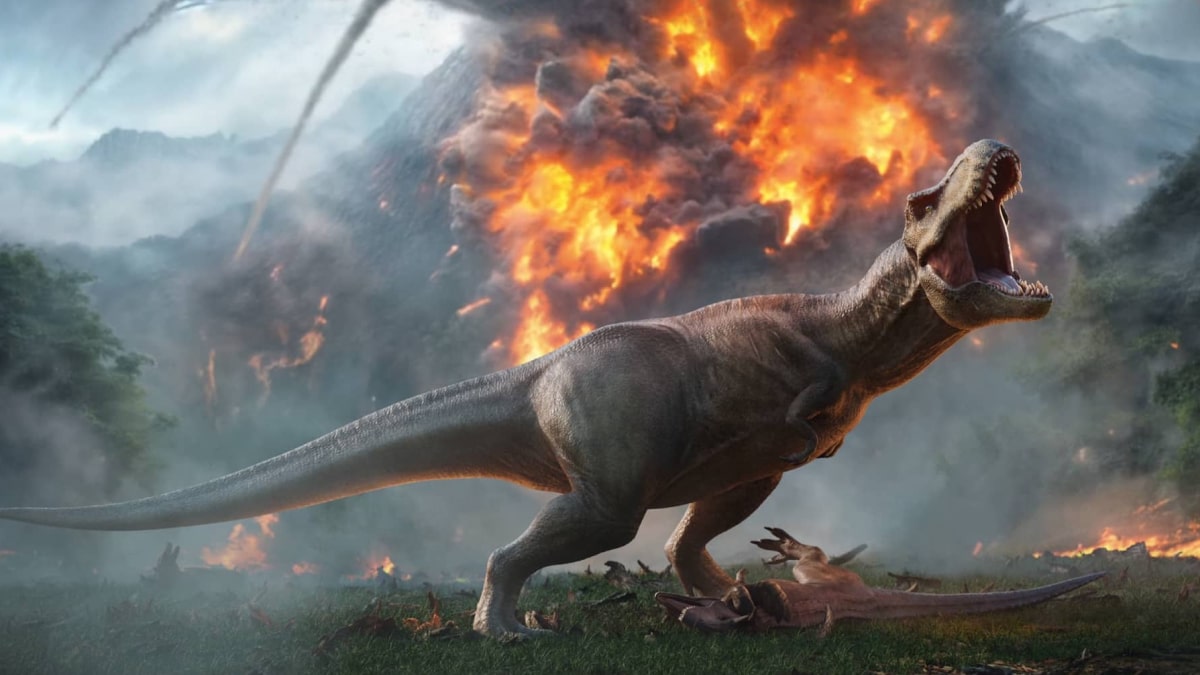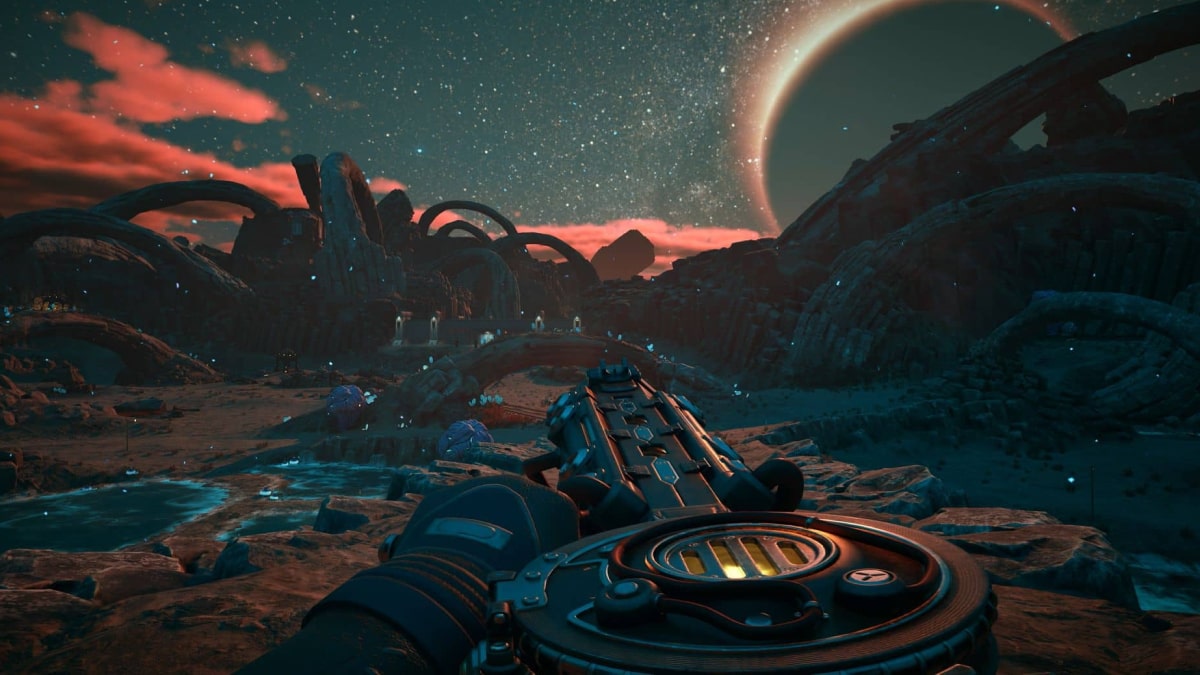You can trust VideoGamer. Our team of gaming experts spend hours testing and reviewing the latest games, to ensure you're reading the most comprehensive guide possible. Rest assured, all imagery and advice is unique and original. Check out how we test and review games here
Generalisations incoming:
It seems that there are two types of Assassin’s Creed IV: Black Flag fans – those who love it because they love Assassin’s Creed (Group A), and those who preferred to treat it as a smashing Pirates of the Caribbean game while caring not a jot for all the Templar/Brotherhood s**** it came baggaged with (Group B).
Given that Rogue is a direct follow-up to Black Flag, narratively and mechanically, there will be two reviews here, one for each camp. It’s only fair.
Group A:
Overshadowed as it is by its current-gen brother Unity, it’s easy to think of Rogue as an afterthought; the unloved runt of an ever expanding litter, slopped out to soak up the still significant dollars of those yet to upgrade from 360 or PS3. It’s a thrown bone, a consolation prize.
Rogue does a lot to change that perception. Set some years after Edward Kenway’s demise, around the time his son Haytham will sire the protagonist of Assassin’s Creed III (god, all this must be impenetrable to newcomers), Rogue puts you in the deadly shoes of Shay Patrick Cormac and invites you to experience his journey from repentant Assassin to card-carrying Templar.
Shay is an interesting character in what he represents. Rogue plays with the series’ many tropes, inverting its traditional mechanics against the player. You will be stalked by Assassins throughout, who have much of the same moves as you. They’ll hide in hay bales, skulk in bushes and creep around rooftops, waiting for the right moment to shank you with their hidden blades, and can easily get a one-hit kill if you’re not at full health.
Thankfully, Shay’s enhanced senses will warn him when an Assassin is hiding nearby. Various audio-visual clues indicate the presence of danger, and activating Eagle Vision will allow you to pinpoint the threat before a strike. Usually. It depends how well hidden they are.
Rogue pulls no punches in its portrayal of the Assassins as the villains – or at least as being just as awful and demented as the Templars they despise. Uncovering a dastardly/misguided (delete as appropriate) plot by his mentor, one Achilles Davenport, to use Precursor technology to do, well, horrible bloody things, Shay defies the Brotherhood and ends up allying with the Templars, enjoying their vast resources and implied backing of the British war machine to get on with business.
After seven games of fighting the good fight with the Assassins, Rogue offers a welcome deconstruction of their endless war. Previous titles have hinted at the warring factions being two cheeks of the same arse, admittedly not clever or original take on this kind of subject, but Rogue dares to be sympathetic to the Templars, presenting them as a group of individuals who, for the most part, want the world to be safe and prosperous. The road to hell is paved with good intentions, as they say.
But Shay, the individual, is duller than an energy-saving light bulb that’s still in its box. From 1995. And broken. He has the worst Irish accent since Sean Connery in The Untouchables, which is explained by him being born in New York but still sounds horrendous – and Shay has quite a few monologues. He also has a catch phrase: “I make my own luck!”. Or “Oi mayke me orn lock!”, if you prefer.
As catchphrases go, it’s, well, it’s s***. Despite this, he repeats it often, whenever another character wishes him luck, which happens every five minutes. All that’s missing is a cut to close-up and a wink to camera.
As an avatar with which to explore the other side of the Assassin vs Templar story, Shay serves his purpose, and the player shares a few tender moments with him. He’s an ex-Assassin hunting Assassins after all – you can rightly guess that he doesn’t always enjoy his work. But if previous games have taught us anything, it’s that the best Creed games centre around characters who are fun to watch, and crack a few jokes every now and then. Ezio, Edward and Arno are prime examples. Sadly, Shay doesn’t crack jokes, and is rarely fun to watch.
That’s not to say that Rogue isn’t fun. Being a re-hash of the excellent Black Flag, it features all the same systems, distractions and rewarding exploration. It’s missing the underwater sequences (which makes sense, because it’s cold up north), but everything else is present and expanded. Shay’s ship, The Morrigan, has the same equipment upgrade path as Edward’s Jackdaw, with a few improvements. The puckle gun for example, a sort of 18th century machine gun, makes short work of gunboats and schooners.
Naval gameplay is largely unchanged. The difference is in the setting, transferring the action from the sun-soaked Caribbean to the freezing North Atlantic brings a new weather system with harsh winds that can throw you off course, blizzards that reduce your vision to almost nothing, and ice sheets which have to be ploughed through with your ram. You’ll encounter plenty of ships to attack and plunder, but the same can now happen to you. You’ll find yourself fighting off boarding parties fairly often, which is another welcome twist on an older formula. However, the outcome is largely the same – kill enough of the other crew, and they’ll surrender, giving you their cargo and a new ship to destroy, salvage or recruit.
The Naval Campaign makes its way back, of course, and again it’s almost exactly the same as before. The difference now is that you’re helping the British fight the Seven Years War against the French, in an imperialistic twist.
The off-mission gameplay in Rogue is as plentiful as it was in Black Flag. It offers a plethora of engaging distractions, acres upon acres of new land to explore, ships to fight, forts to take, and game to hunt. The main story, however, is over far too quickly.
Spread over just six sequences, it’s roughly half the length of your usual Assassin’s Creed romp, and feels disjointed, as if it was planned to be longer but had entire chapters ripped out during development. At one point, Shay has nothing, not even clothes on his back, and is recovering from a near-mortal wounding. Minutes later (literally), he’s an aspiring New York property developer and a rising star in the Templar order. I’m all for a plot that batters along, but this just feels like huge chunks are missing.
There are some standout moments in this regrettably stunted story, though. Certain sequences take you to locations well outside of North America, and feature set-pieces that rival the Uncharted series in sheer Bayhem. It also does a good job of tying up loose ends from AC3 and Black Flag, and even ties into Unity in a way which I loved, and didn’t expect – answering a question which sat at the back of my mind throughout that game, one that it seemed to deliberately ignore. Now I know why.
Rogue isn’t quite the full-fat follow up to Black Flag that I wanted it to be, but it’s also not the throwaway, B-team release that I was dreading either. It’s somewhere between a sequel and an extended epilogue, unapologetically stuffed full of fan service, and works as a love letter to games gone by; one that bridges the gap between sagas old and new. If you care about the Assassin’s Creed universe, it’s well worth your time – some may even consider it essential – but for casual fans and newcomers, there’s nothing here that Black Flag doesn’t already offer.
Group B:
It’s Black Flag with snow. Story’s a bit bollocks. Yarr!
Does Rogue suffer from being on last gen?
Compared to Unity, and the current-gen versions of Black Flag, it should be no surprise that Rogue is graphically inferior (although, embarrassingly for Ubisoft, it does have a much more stable framerate than their proper “next-gen” game).
However, Rogue does look extremely good for a PS3/360 game, and doesn’t skimp on the world size. There are three distinct maps in Rogue – New York (which is a tweaked version of New York from AC3), River Valley and The North Atlantic, with the latter two each being roughly equal in size to Black Flag’s Caribbean. That’s a lot of world to explore, and each area looks and feels different.
River Valley is a rocky and leafy region representing upstate New York and bits of Canada, and includes the sizable settlement of Albany. The North Atlantic, a vast, snow covered wasteland of dramatic beauty, is where Rogue gets to really show off what its creaking last-gen engine can do.
The draw distance stretches right up to the horizon, and it looks particularly gorgeous at night. Seeing the moon rise, flicking its blue light onto the waves as the aurora borealis forms in the sky is a nice touch. Last-gen or not, this game has its wow moments.
I’ve been asked by a number of people if it’s worth getting Rogue now, or waiting for the possible PC, PS4 and Xbox One versions that seem inevitable. In answer to that question, I can say that it is a great looking last-gen game, and I never once regretted the fact that I was playing on a PS3 instead of a PS4. Your mileage may vary, of course.
Version tested: PS3
Assassin’s Creed: Rogue
- Platform(s): PC, PlayStation 3, PlayStation 4, Xbox 360, Xbox One
- Genre(s): Action







